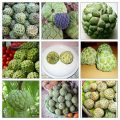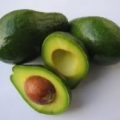Fruit powders are made from dehydrated fruits by grinding into a powdered form. They are used in ayurvedic preparations or as an ingredient in pickles and sour foods.
Shelf-life: The preservation relies on the very low moisture content of less than 15% and increased acidity. When properly packaged, they have a shelf-life of up to one year.
Equipment required
• Scale
• Bowls, containers
• Cooker or stove
• Boiling pan (stainless steel or aluminium)
• Mesh trays
• Solar or cabinet dryer (optional)
• Pestle and mortar or grinder
• Stainless steel sieve
• 400 gauge polythene bags
• Heat sealer
• Self-adhesive labels
Quality control points:
• Use only ripe but firm and good quality fruits without bruising or damage.
• Blanch fruits in order to induce the development of a uniform colour, to soften the fruit for uniform dehydration and to control the activity of enzymes and micro-organisms. The optimum time required depends on fruit species and cultivars.
• If available, dry the fruits in a solar or cabinet dryer to improve the quality. By sun drying only, a fairly good product is obtained.
• Check the correct fill-weight before sealing the bags.
• If available, use 400 gauge polypropylene bags as they provide greater protection against moisture.
Jackfruit Powder

1. Cut fruit in half lengthwise.
2. Carve out the core of the fruit.
3. Scoop out the bulbs.
4. Cut the end of the bulbs to remove the seeds.
5. Cut deseeded bulb into 2-4 pieces.
6. Blanch fruit segments by plunging into boiling water for 2 minutes and cooling them rapidly under clean cold water.
7. Place blanched segments in a single layer on the mesh dryer trays. Put them close together but not touching to achieve the maximum capacity and an even rate of drying.
8. Load trays into the drying cabinet and dry at 55ºC for 6-7 hours until the moisture content is reduced to 5%.
9. Grind pieces into a powder using a grinder or by pounding them using pestle and mortar.
10. Sieve powder to remove lumps and unground material.
11. Pack powder in moisture- proof containers, e.g. 400 gauge polythene or polypropylene pouches and heat-seal them.
12. Label.
Source: Manual for Small Scale Fruit Processors © 2004 International Centre for Underutilised Crops, UK






